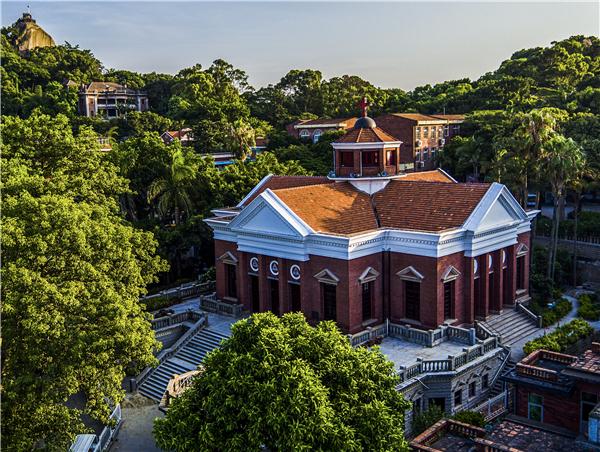Gulangyu Island, a world cultural heritage site, is known as the "island of music". The island is the hometown of world-renowned musicians such as Yin Chengzong, Zhou Shuan, and Xu Feiping. On Gulangyu Island, there are two musical instrument-themed museums, namely the piano museum in Shuzhuang garden and the organ museum in the landmark Bagua building. The establishment of these two museums must be linked to Hu Youyi, an Australian Chinese who loved his hometown. He was a lover of music all his life, especially collecting all kinds of pianos and organs. In his later years, he dedicated all his collections and established two museums on Gulangyu Island.
Hu Youyi was born in 1936 in Gulangyu, and his ancestral home is in Yongding, Fujian. His father, a Christian, took him to Trinity Church on the island as a child to listen to sacred music. Hu was influenced by church hymns and the rich music atmosphere on the island, which shaped his character, and stimulated his love for music.
At the age of 14, Hu went to the Shanghai Conservatoire of Music for further study and went to the Royal Conservatoire of Music in Brussels, Belgium in 1965. Since then, he was engaged in music teaching in Europe, Australia, and other places.
Hu invested most of his family fortune in his piano collection and purchased more than 100 pianos from foreign churches, schools, and families, some of which are treasures with a history of more than 100 years. He once said fondly, "The piano is like my child."
Although they lived in a foreign country, Hu and his wife Huang Yulian returned to Gulangyu Island several times in the 1990s.
On one occasion, Hu was delighted to learn that the Xiamen government was preparing to build a Gulangyu music and culture brand. After discussing with his wife, they decided to dedicate all their life's treasures and to settle in Gulangyu to show the unique music culture of the island.
When his beloved piano set sail from Melbourne, Hu always paid attention to the weather changes for fear that bad weather like typhoons would cause damage. When the piano arrived at the Gulangyu wharf, he went there to supervise and was not relieved until the piano and accessories were carried into the museum with a pallet truck.
With the introduction of the piano museum, Hu dedicated a piano collection containing many treasures. For example, "a 1928 American-made, expensive, fully-automatic" Hana's "famous piano, with rolls of perforated ancient piano scores, realistic playing of works from Beethoven, Chopin and Brahms, which has become the background music of the museum and accompanied by the sound of the waves on the shore of Gulangyu."
These exhibits span several centuries, some of which have survived the impact of the two world wars and are still well preserved. Through a tour around, one can get a glimpse of the development history of the world piano.
In addition to the piano, Hu also set up an organ museum, which has a collection of dozens of organs, large and small. One of them is a huge woodwind "Kathvent" he bought from Boston, USA. It is 13 meters high, 12.5 meters wide and weighs 35 tons. It has 7451 windpipes and 133 sound plugs. It is the "Townhall treasure" of the Organ Museum.
"Putting a treasured piano in Gulangyu Island is like bringing your beloved home, it is always reassuring." This sentence expresses his heartfelt dedication to cherish this all his life.
(This article is originally published in Gospel Times. The author is a Christian from Xiamen. The views in this article only represent the author's standpoint.)
- Translated by Nonye Nancy












